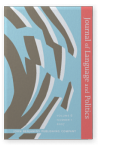Vol. 6:1 (2007) ► pp.91–128
Unnatural acts
Nuclear language, proliferation and order
International relations theory overdetermines proliferation but few states possess nuclear arms. This article maintains the linguistic construction of ‘proliferation’ accounts for the international nonnuclear order. Following an overview of its approach, the article begins with a review of earlier works and notes the inability of ‘nuclear language studies’ to account for the order of rejection rather than acquisition of nuclear arms. The article traces that limitation to a practical assumption about the world that animates scholars to attend to how words distort rather than create reality. The article then introduces a version of constructivism that claims speech acts produce constitutive rules that create what ‘is’ and oblige order (as ‘same use’) to suggest how language accounts for the order that turns on rejection of nuclear weapons. Finally, the article illustrates how states, following this constructivist process, often used discursive practices that emphasized the ‘unnatural’ to create ‘proliferation’ between 1958 and 1968.
